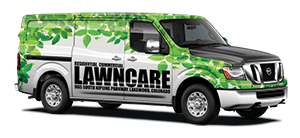
By Tom Crain
From four-wheel drives to alternative fuels, maintenance trucks continue to move forward.
For the past 50 years, pickup trucks, vans and trailer combos have been the most popular vehicles for mobilizing work crews and equipment in the landscaping industry.
In the mid-’50s, Ford introduced its F-100 truck series with the first automatic transmission and overhead valve V8 engine, commonly called the Y-block. It also introduced two other irresistible features: the chrome grill and the four-wheel drive.
The more compact pickup was popularized during the ’60s, when Toyota and Nissan entered the North American truck market. In the ’70s, the Ford F-150, Chevy Silverado and Dodge Ram were introduced.
Today, landscaping trucks come in a wide variety of truck bodies, including dump trucks, flat beds and more. They fall into one of three weight classes: lightweight, medium range and heavy-duty.
Custom commercial
Many of today’s landscapers are investing in highly customized, medium-duty trucks designed to eliminate the operation of trailers.
Tony Bass, president of Super Lawn Trucks, Fort Valley, GA, has been capitalizing on this trend since the early ’90s. He sells a highly specialized landscaping truck system designed to store and transport tools and equipment.
Nissan recently revived the commercial van with its new NV model. Joe Castelli, vice president, Commercial Vehicles and Fleet, Nissan NA, says he believes the NV is ideal for landscapers for a number of reasons, including its versatility and mobility.
“A commercial van must serve many more functions today, including acting as a mobile office for time spent on the road or at a job site,” says Castelli. “We’ve made storage and productivity items integral to the design, too.”
The NV’s driver compartment allows the operator to organize the paperwork, business cards and equipment needed to handle multiple jobs. The vehicle has a full-sized center console capable of accommodating hanging files or a laptop computer. The lid slides forward to provide an efficient work surface. And, the passenger seat folds down to provide another flat work surface.
In the Ram, improving the organization of tools and equipment meant adding the RamBox, a cargo management system with adjustable cleats. “It combines lockable, lighted storage bins in the truck’s bed walls with enough space to fit toolboxes, but also equipment such as rakes, blowers and pruners,” says Nick Cappa, spokesperson for Ram Truck Brand, Chrysler Group LLC.
In the age of the Internet and smart technologies, more truck manufacturers are developing Wi-Fi systems in their vehicles for mobile functionality. GM has developed a Wi-Fi system available on select models that turns its work trucks into a wireless hot spot within a 150-ft. range. Ford Work Solutions is a bundled package of technologies for running businesses remotely in its work trucks.
Today’s landscapers are saving money by downsizing their trucks and learning how to do more with less. “There was a time when a large fleet made me happy,” admits Dean Snodgrass, vice president and one of three brothers operating Dennis’ 7 Dees Landscaping in Portland, OR. But now, he says, “we realize that we don’t necessarily need large, heavy trucks on-site all the time and for every job. We are always rethinking the size of vehicles necessary.”
San Francisco-based Cagwin & Dorward used to rotate its trucks out of day-to-day operations about every 10 years. “In this current economy, we are stretching our budget by extending the life of our trucks up to 15 years if necessary,” says Steve Glennon, vice president, treasurer and chief operations officer.
The big gas-guzzling vehicles that landscapers thought they needed in the heady days of the ’90s helped put many in the fast lane toward bankruptcy once the recession hit. To become more economical, landscapers are now moving away from fuels they’ve traditionally used, such as diesel and gasoline. Instead, they are turning to propane, biodiesel and natural gas for their long-term economical and ecological value.
Photo: Nissan North America
